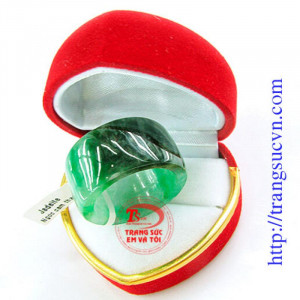Dấu hiệu của Bao Thể Đá Quý
Insights From Inclusions
Natural gemstones are typically far more valuable than synthetics, so being able to identify them correctly is a powerful skill. One of the best ways to determine if a gemstone is natural or synthetic is to note the type and variety of its inclusions.
"Horsetail" of Fibrous Serpentine
The most distinctive internal feature of demantoids is the "horsetail" of fibrous serpentine (chrysotile) that is present, in whole or in part, in most pebbles or cut gems. Note the tiny crystal (probably chromite) from which all the fibers radiate. Magnified 20x.
Photo by John I. Koivula/GIA
Gas Bubbles and Curved Striae
The larval-shaped gas bubbles and curved striae (or parallel lines) would not be seen in natural rubies. This occurs in synthetic rubies made by the flame-fusion process.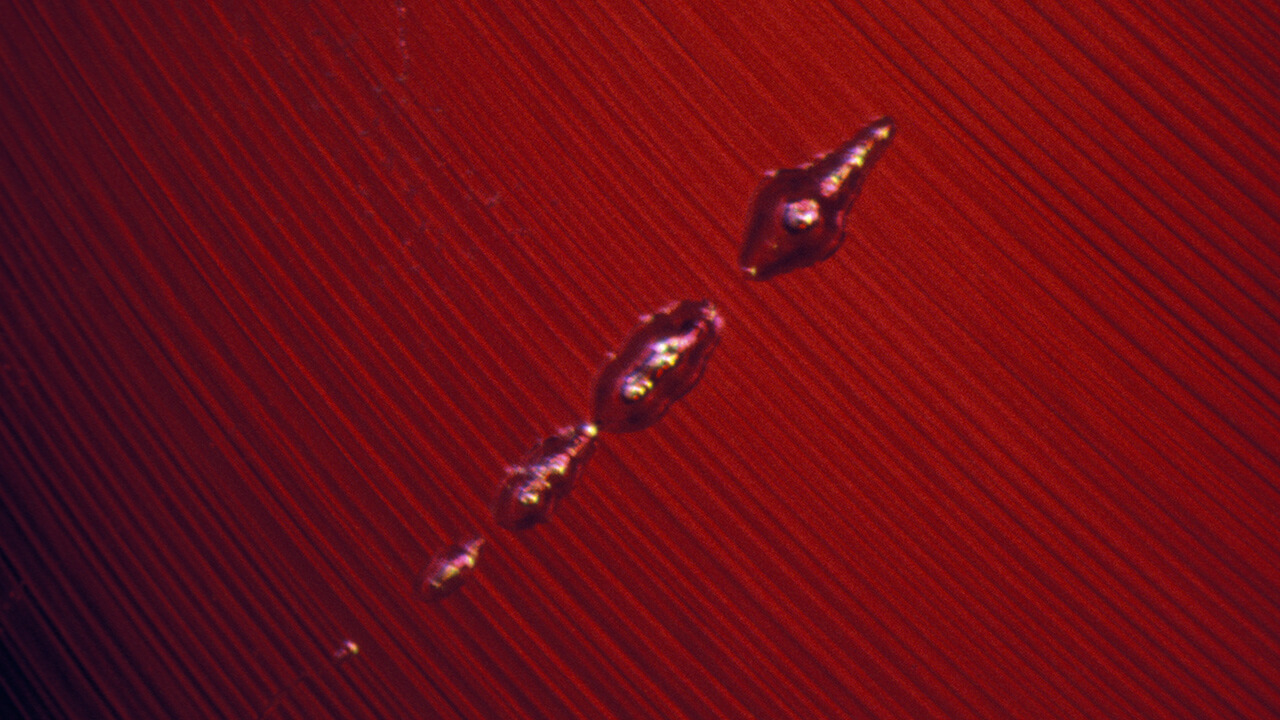
Photo by John I. Koivula/GIA
Faceted Synthetic Moissanite
Channels appeared as dark lines in a faceted synthetic moissanite. Magnified 10x, dark field with transmitted light illumination.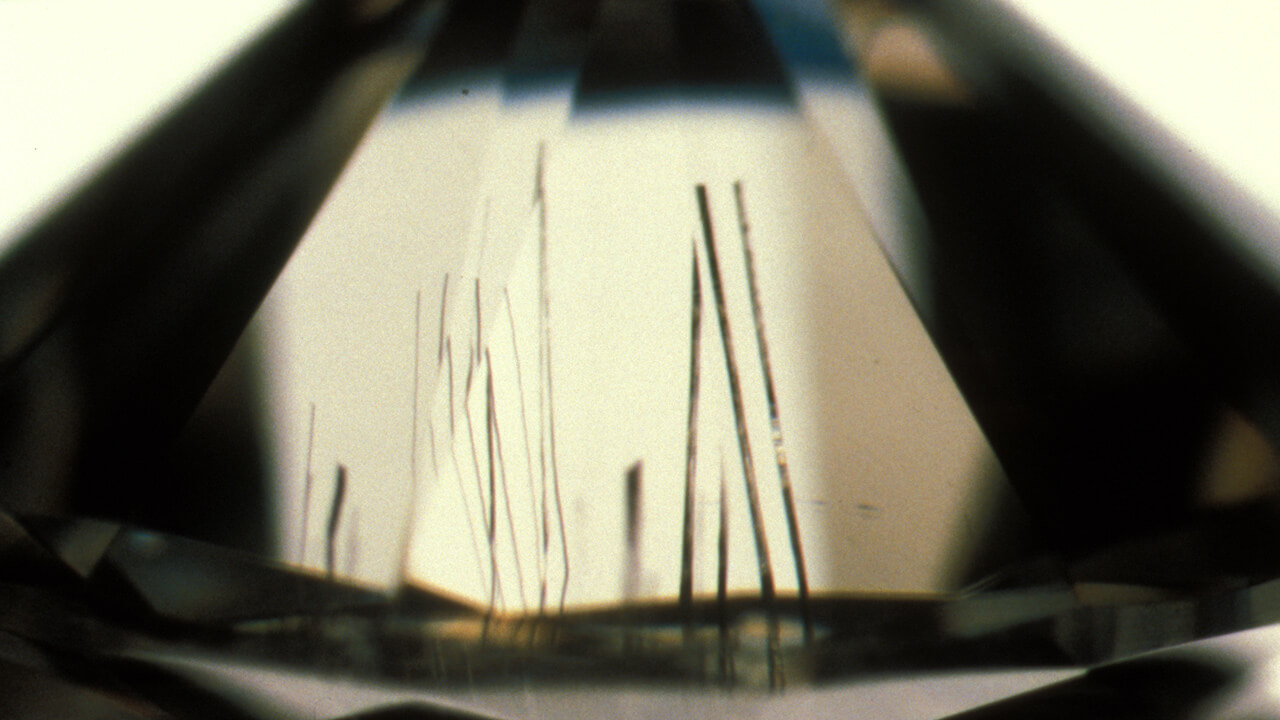
Photo by Jim Shigley/GIA
Hematite Platelets and Anthophyllite Needles
The inclusion seen in the 7.88 ct sunstone consists of orange platelets of hematite and near-colorless needles of anthophyllite. Magnified 10x.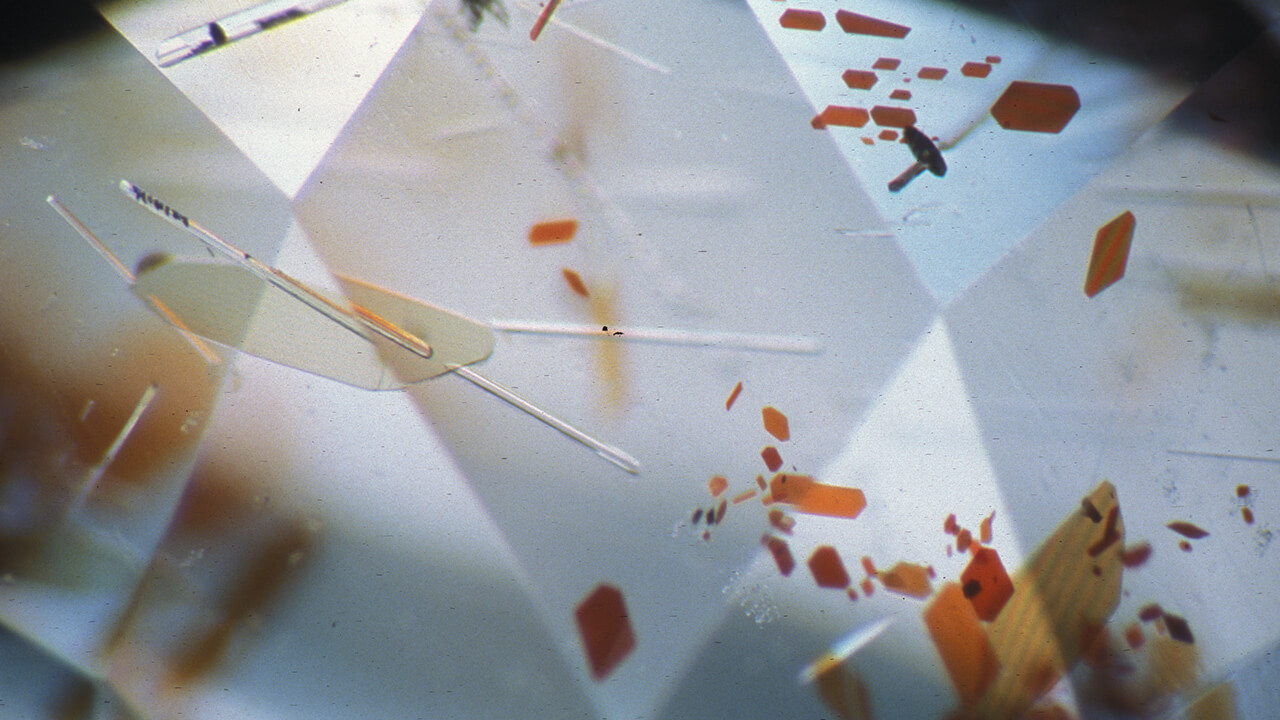
Photo by John I. Koivula/GIA
"Lily Pad" Inclusion
The most common inclusion to be found in peridot is the so-called "lily pad" inclusion. In reality, the lily pad is a cleavage separation that was produced by the expansion of either a small solid included crystal or, more commonly, a small fluid-filled negative crystal. The lily pad is an important identifying feature of peridot. Magnified 20x.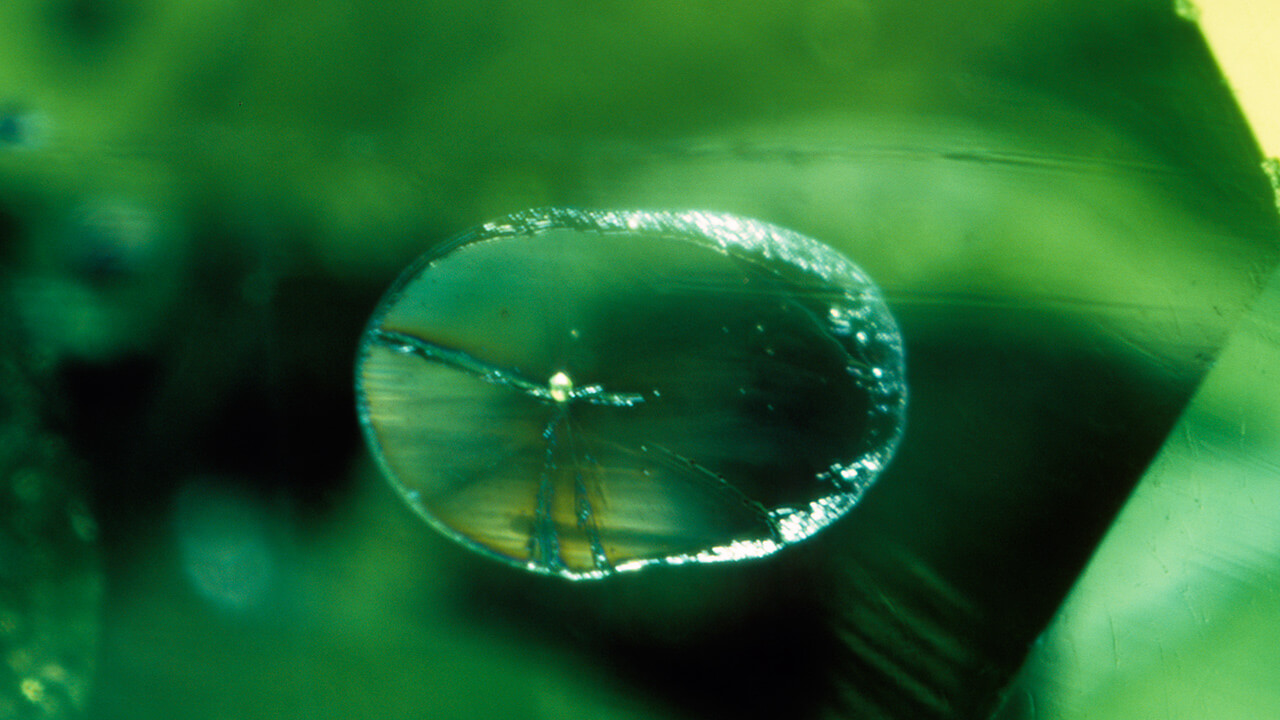
Pinkish Purple Flash Effect
This fracture-filled 2.51 ct diamond shows a pinkish purple flash effect. Feathers were laser drilled. Photo by Vinnie Cracco/GIA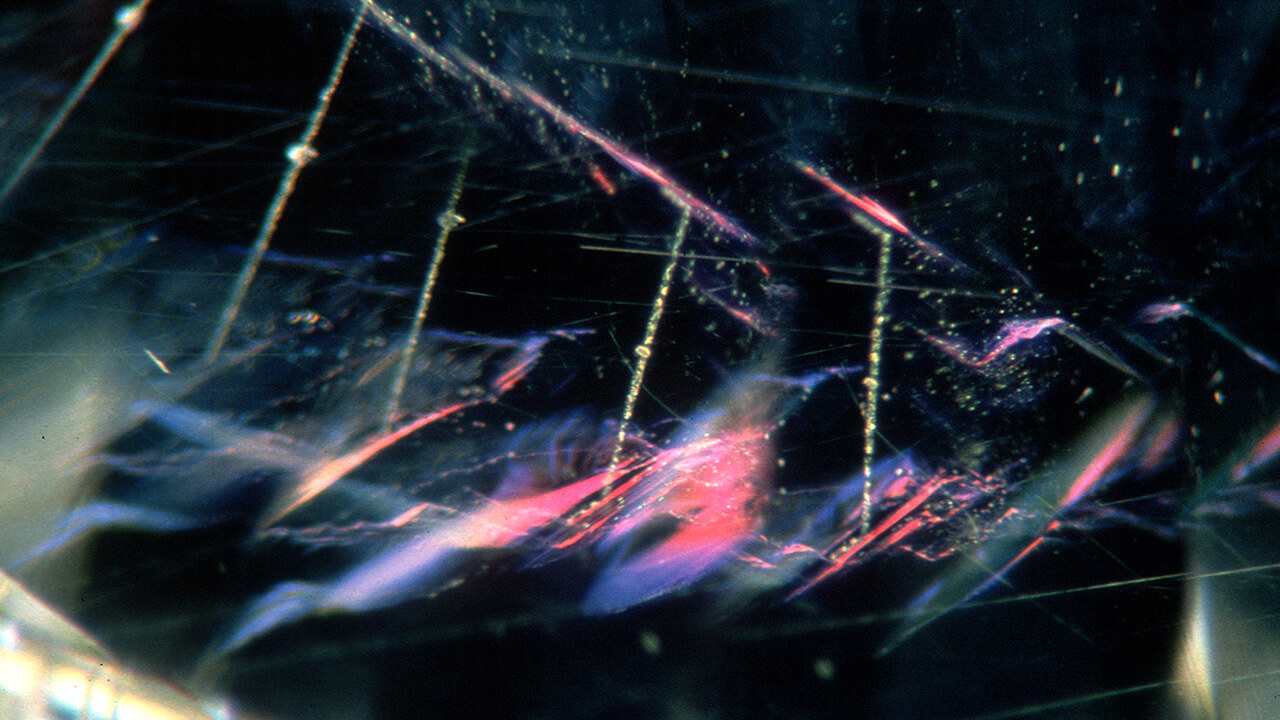
Fluid Inclusions
Minute fluid inclusions in the solid phase of this three-phase inclusion is from an emerald found on the sunken Spanish galleon, the Atocha; transmitted light, magnified 200x.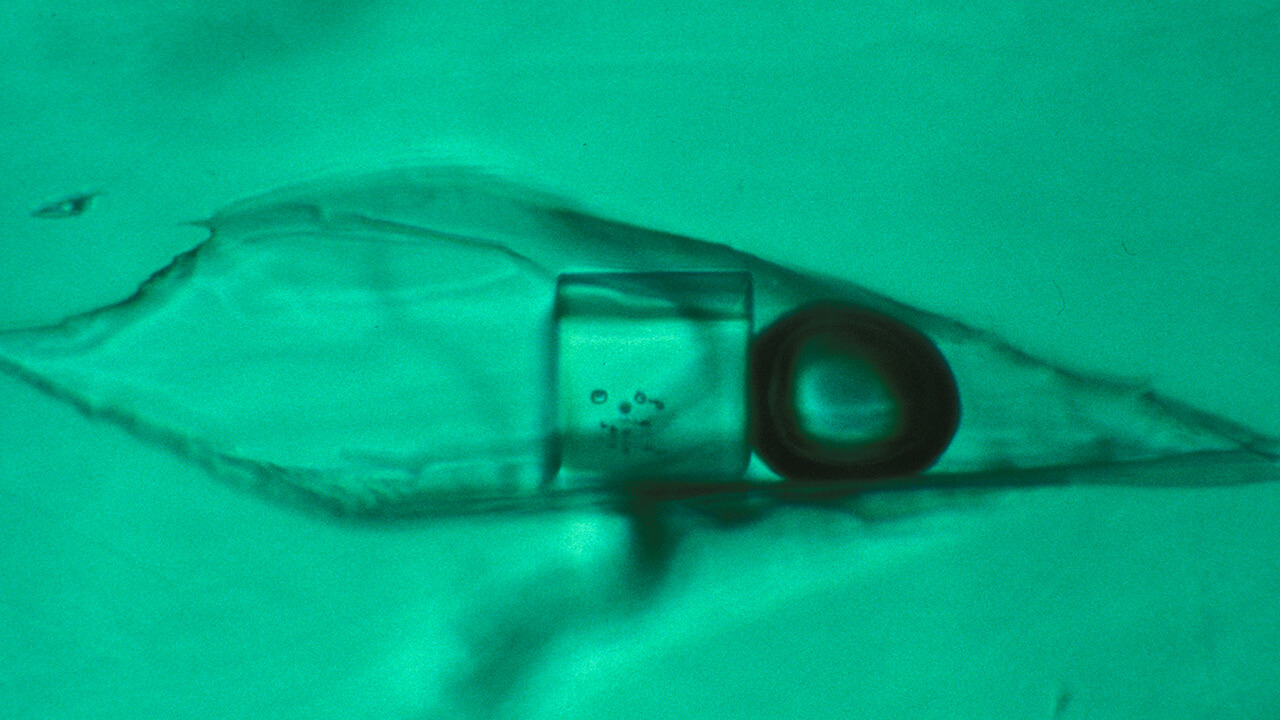
Photo by John I. Koivula/GIA
Natural gemstones are typically far more valuable than synthetics, so being able to identify them correctly is a powerful skill. One of the best ways to determine if a gemstone is natural or synthetic is to note the type and variety of its inclusions.
Certain types of inclusions are found more often in natural gemstones than in their synthetic counterparts. Needles, clouds, fluids, and crystals are examples of inclusions typically found in natural gemstones.
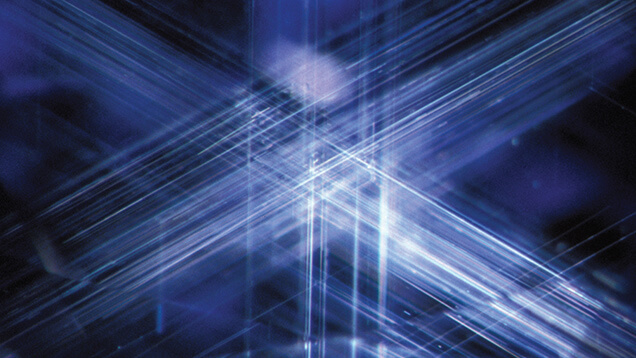
Intersecting rutile needles (called “silk”) are inclusions commonly found in corundum. Photo by John I. Koivula/GIA
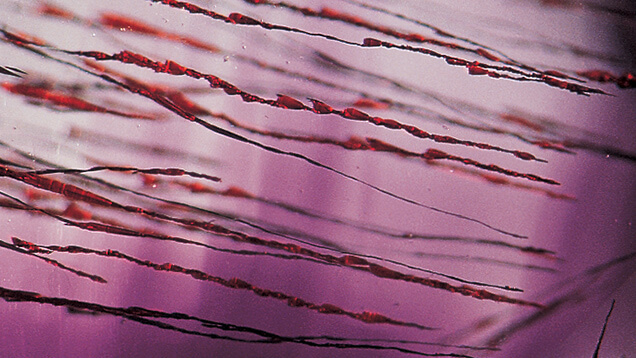
A common inclusion observed in amethyst is deep red needles of hematite (magnified 10×). Hematite needles are thin, elongated inclusions. They appear only in natural gemstones. Photo by John I. Koivula/GIA
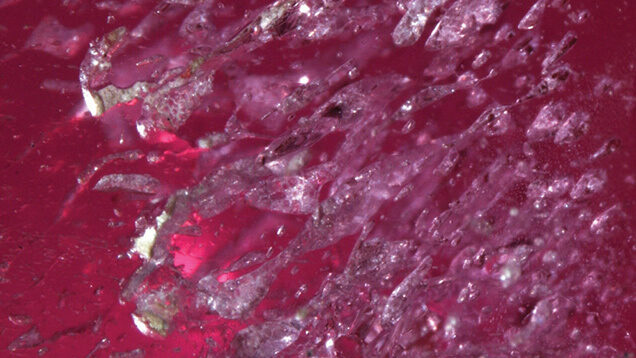
Hallmark inclusions of a flux-grown Kashan synthetic ruby are translucent to opaque-white primary flux. Photo by Nathan Renfro/GIA
“By understanding the types of inclusions and their characteristics, you can determine if a gem is natural or synthetic. That helps you understand the stone’s history and value,” says Brenda Harwick, GIA’s manager of on-campus and laboratory gemology instruction in Carlsbad.
The three-volume Photoatlas of Inclusions in Gemstones, authored by Eduard Josef Gübelin and John Koivula, is widely considered a definitive read on the subject. To learn more about these valuable resources visit store.gia.edu and enter keyword “Koivula.”
Some GIA students become so curious about the particular types of minerals that make up inclusions that they pay less attention to the general type of inclusion they are examining.
Here’s a helpful study tip: First become adept at identifying the overall types of inclusions, and then pursue your natural curiosity as to their specific make-up. Advanced chemical and structural testing is often required to determine what they are, but rutile and zircon are some common culprits (depending on the species of gemstones).
Remember, though, it’s the type and number of inclusions that really matter – and not their precise chemical composition. Keep this in mind, and you will become a better gemologist.
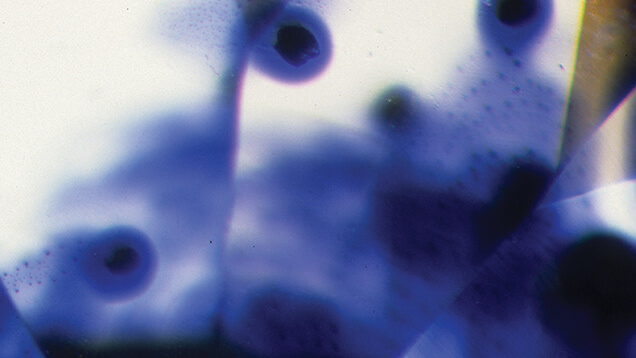
This Montana sapphire contains dark rutile crystals. When the stone is heat-treated, the titanium dissolves into the host sapphire combining with iron to enhance the blue color of the stone. This internal diffusion of blue color is proof of heat treatment in sapphire. Photo by John I. Koivula/GIA
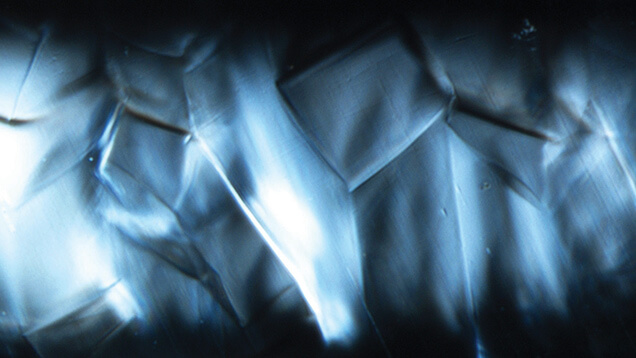
This is hydrothermal growth in a synthetic aquamarine. This chevron type of growth structure is indicative of the synthetic origin of this aquamarine. Photo by Nathan Renfro/GIA
TIPS FOR VIEWING INCLUSIONS
By looking at gemstones under a microscope, you’ll see the number and general type of inclusions. Doing this can help you determine if a gem is natural or synthetic; and that information can affect a gemstone’s value.
Studying gems under a microscope also helps you create your own “visual library” of inclusions, which over time, will become references as you examine new stones.
Here are a few tips for using a microscope for this purpose.
Use a variety of lighting environments to examine inclusions, including: brightfield, darkfield, polarized light, and fiber optic illumination. This lets you see how the gemstone reacts to a controlled pathway of light, revealing valuable information about the inclusions. Each type of light may yield new information and help you see something you would otherwise miss if you only used one lighting environment.
First look through the broadest window into the gem, which is generally the table facet, and then into the gemstone’s pavilion (this often gives you an excellent view of the inclusions).
Be certain to rock and tilt the gemstone so that you view it from a variety of angles.
Công ty Trang Sức Em Và Tôi: Tổng hợp từ GIA
«Trở về trước: Các tiêu chuẩn đánh giá 1 viên đá quý Tiếp theo: Đặc tính của Vàng-Gold»






















